Parsons, Scarecrows and Fear: Kent's Smuggling Heritage
by Richard Crowhurst
Five and twenty ponies
Trotting through the dark --
Brandy for the Parson,
Baccy for the Clerk
Chorus to A Smuggler's Song by Rudyard Kipling.
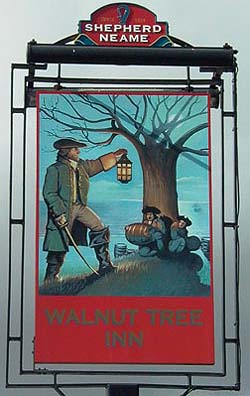 Kipling's famous poem
encapsulates the romantic vision of the great age of British
smuggling in the 18th century, conjuring up images of roguish
chancers transporting small quantities of contraband under cover
of darkness. Other authors such as Russell Thorndyke and Richard
Barham contributed to the popular and romantic image of the
'jolly smuggler.' However, in England's southeastern corner,
smuggling was a very different affair! Kipling's famous poem
encapsulates the romantic vision of the great age of British
smuggling in the 18th century, conjuring up images of roguish
chancers transporting small quantities of contraband under cover
of darkness. Other authors such as Russell Thorndyke and Richard
Barham contributed to the popular and romantic image of the
'jolly smuggler.' However, in England's southeastern corner,
smuggling was a very different affair!
The close proximity to continental Europe, good roads to London,
and a poor domestic economy at the end of 17th century created
ideal conditions for organised smuggling to flourish. At its
height, the illegal trade was controlled by ruthless gangs who
did not hesitate to commit murder, violence, blackmail and
bribery. So secure was their position that they transported goods
in broad daylight in convoys of hundreds of heavily armed men. At
a time when most people went no more than a few miles from home,
they thought nothing of travelling from one side of Britain to
another. This was organised crime on a massive scale. Government
figures from 1782 estimated that a quarter of all the vessels
engaged in smuggling nationwide were based in Kent and Sussex.
Half the gin smuggled into England was landed here.
Kentish smuggling first grew from the illegal exportation of
wool. The government imposed restrictions on the trade, and by
1700 up to 150,000 'packs' of wool a year were being shipped from
the area days after shearing. From these beginnings the Huguenot
families who controlled the trade grew into the first smuggling
gangs. As import taxes on luxury items were imposed, gangs, large
and small, adapted and by 1720 the emphasis was on bringing in
tea, spirits, tobacco and other goods. The black economy pervaded
all social levels and it has been claimed that Sir Robert
Whalpole (Whig Prime Minister) amassed much of his fortune from
the trade. Smugglers soon became involved in other enterprises,
including the Jacobite rebellion, international espionage,
military campaigns (Nelson employed smugglers from the town of
Deal as pilots due to their experience) and highway robbery.
Conflicts with the French throughout the late 1700s made
smuggling harder, but despite the efforts of William Pitt and the
Napoleon, 'classic' smuggling continued in the southeast until
the 1830s.
Sea smugglers brought goods ashore (a process known as landing),
before inland gangs took over to hide, distribute and sell the
contraband. Hence many of the gangs operated in towns and
villages miles from the sea. Kent's coastline encompasses muddy
tidal creeks in the north, sandy coves and chalk cliffs to the
east, and long shingle beaches and brooding marshes to the south.
These differences in terrain led to the development of different
techniques for landing and hiding good. Even so, the gangs could
not have operated without significant financial backing; some
shipments required an initial outlay of more than
£10,000.
This article describes the main locations involved in the
smuggling trade, split into two parts -- roughly representing the
north and east, and the southern areas of the county. To make the
most of the information, visitors should arm themselves with a
map and plan their route in advance. The most suitable are the
Ordnance Survey Landranger series, but any good road atlas will
do. The order by which places are listed is entirely arbitrary
and doesn't reflect any historical or geographical significance
and events are not necessary listed in historical order. I'd
advise anyone planning to explore the area to obtain a good book
on the subject.
The North Kent Smuggling Trail
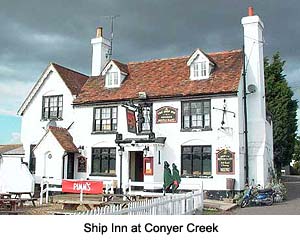 This section starts in the
town of Gravesend and follows the Thames estuary eastwards to the
Isle of Thanet, before turning south along The Channel coast to
Folkestone. It then returns west along the bottom of the North
Downs, through Maidstone, to the village of Wrotham. This section starts in the
town of Gravesend and follows the Thames estuary eastwards to the
Isle of Thanet, before turning south along The Channel coast to
Folkestone. It then returns west along the bottom of the North
Downs, through Maidstone, to the village of Wrotham.
The oldest pub in Gravesend, The Three Dawes, was a
known smuggler's haunt. Legend has it that three tunnels lead
from the cellars to different escape routes around the town. Now
sealed off, in their time they were a useful aid in avoiding both
Revenue men and naval press gangs. And as if three doors weren't
enough, seven different staircases were installed in the old
Pilot's House behind the pub, in order to further confuse
the authorities.
St Mary's Hoo lies at the centre of area used by the North
Kent Gang. Nearby Shade's House is a bleak and desolate
place, ideal for the smugglers' purposes, and the nearby inlet of
Egypt Bay was a favoured landing spot, further isolated by
the threat of malaria that hung over the marshes. A number of
farm buildings at nearby Allhallows were also used for
storage. On the Isle of Grain the Hogarth Inn was
frequently used by smugglers, not only large groups like the
North Kent Gang, but also smaller family concerns. One of these
was the Roots family of Chatham. Brothers Edward and Richard
Roots and several other men ran ten cargoes in a year using their
ship The Mermaid. Most of their landings were on the
Cliffe Marshes, but they also used Chalk Marshes
(near Gravesend) and wharves in the Medway towns. The
name of the Isle of Sheppy means 'Island of Sheep,' so it
is no surprise to learn the island was at the centre of the
Owling trade. The post office at Warden Point north of
Eastchurch was formerly the Smack Aground Inn, one of the
bases of the North Kent Gang. The original name reflects the fact
it was also said to have been the headquarters of a group of
local wreckers who were led by the landlord's son.
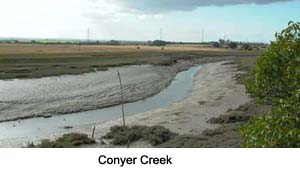 On
the A2 between Sittingbourne and Faversham lies the village of
Teynham, which was home to a strong smuggling community.
Most of their activities were carried out at Conyer to the
north, where the small boatyard and the Ship Inn
remain. Despite a modern housing development, a walk north along
the creek easily shows how remote and suitable for smuggling the
area would have been in the past. On
the A2 between Sittingbourne and Faversham lies the village of
Teynham, which was home to a strong smuggling community.
Most of their activities were carried out at Conyer to the
north, where the small boatyard and the Ship Inn
remain. Despite a modern housing development, a walk north along
the creek easily shows how remote and suitable for smuggling the
area would have been in the past.
Faversham was another notorious centre of the trade. It
was said that Dutch vessels would often sail the long way around
the Isle of Sheppy to avoid detection, before coming up
Faversham Creek. Many of the fine Georgian houses around
the town are actually façades applied to older buildings,
illustrative of the wealth accumulated at the time. Goods landed
locally and further east were openly sold below the timber-framed
Guildhall in the centre of the town. Daniel Defoe visited
in 1724 on his tour of England and reported that it was still an
important centre of the Owling trade. Further along the
coast, Seasalter was home to a highly secretive group. The
Seasalter Company, as it became known, was founded by Dr Isaac
Rutton from Ashford. He, and his successors, leased Seasalter
Parsonage Farm in the quiet fishing village in 1740.
Contraband was landed near the Blue Anchor Inn and stored
at local farms before being taken along the North Downs via
Lenham, White Hill and Ospringe. The organisation of Seasalter
Company was extremely complex to prevent detection. It was also
successful. One associate, William Baldock, who held the lease at
Parsonage Farm for a while, died with a fortune of well over
£1 million. He was safeguarded by the fact that the local
Riding Officer was also his nephew. The Seasalter Company was one
of the few that managed to reach an 'accommodation' with the
Coastguard service when they took over enforcement from the
Coastal Blockade in 1831, and they continued to operate under the
leadership of William Hyder. A mile to the west of the Blue
Anchor the Old Coastguard Cottage is the former Coast
Blockade Watch House, which overlooked the shore before the
current sea defences were built.
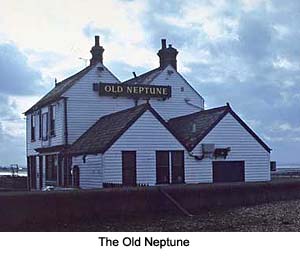 The restricted beaches on
the north Kent coast tended to favour smaller gangs. From the
beach at Whitstable there is an excellent view of the Isle
of Sheppy, clearly seen from the Old Neptune, which
stands right on the smuggling beach. The narrow street known as
Island Walk that runs along the foreshore has witnessed
many incidents in its time. The war with France between 1793 and
1815 presented another lucrative opportunity for the Whitstable
and Swalecliffe Gangs, who began repatriating French
prisoners-of-war. When a house in Castle Road was
demolished in the 1940s, a cache of rusty manacles was uncovered,
probably from a mass breakout during this period. The restricted beaches on
the north Kent coast tended to favour smaller gangs. From the
beach at Whitstable there is an excellent view of the Isle
of Sheppy, clearly seen from the Old Neptune, which
stands right on the smuggling beach. The narrow street known as
Island Walk that runs along the foreshore has witnessed
many incidents in its time. The war with France between 1793 and
1815 presented another lucrative opportunity for the Whitstable
and Swalecliffe Gangs, who began repatriating French
prisoners-of-war. When a house in Castle Road was
demolished in the 1940s, a cache of rusty manacles was uncovered,
probably from a mass breakout during this period.
The Ship Inn at the eastern end of Herne Bay was
another infamous smugglers' haunt. Here, in 1821, the North Kent
Gang shot and killed Midshipman Sydenham Snow during a fight. The
fight involved the smugglers and the men from the Coastal
Blockade watch-house that stood where Albany Road meets
the seafront. A few months earlier, in March, the sentinel of the
house was tied up by a gang of smugglers.
Midshipman Snow's body was laid to rest in the churchyard of
St Martin's Church at Herne few miles away. The
ancient village crowds around the church, and the obviously named
Smugglers Inn opposite has real connections to the North
Kent Gang. In the early 1920s the cellar was extended downwards
and a hidden cache of spirits was discovered. It was promptly
seized by the government! Beside the inn, pay attention to the
chimney on the corner of the Smugglers' cottages, where a
small lookout window can be seen. The Windmill at Herne,
like many across Kent, was used to send messages by the various
gangs by altering the position of its sails; its location on the
hill making it visible for miles around.
Around 1700 the local Riding Officer was based in Herne, as was a
band of local wool smugglers led by one William Chamberlain. He
earned enough money in ten years to progress from poverty to
having a vote in Parliament. Although activity at this time was
still relatively petty, by 1730 the wool trade had progressed to
landing tea and spirits. It was profitable for many people. The
third Riding Officer, William Eads, reported intimidation and
threats from the smugglers, yet he too could afford a
Parliamentary vote, something he could not have funded from his
annual salary of £25.
The Herne smugglers used beaches between Hampton and
Reculver. By the end of the 18th century a number of small
gangs were operating from the coast around Herne, including those
of the Mount family, who landed goods at Hampton, and Thomas
Hancock, who operated further east. Hancock owned property in
Forstal Road and Reculver Road before being forced
to sell them off to raise funds to placate his gang, which he'd
doublecrossed.
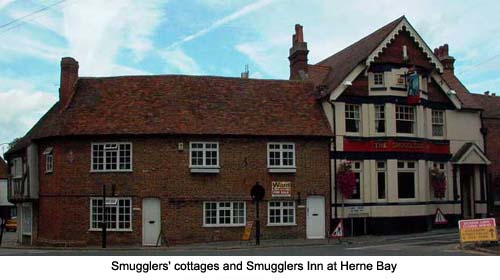
Reculver, with its Roman fort, was also used as the
setting for Richard Barham's poem The Smuggler's Leap. In
reality the beach here was used by a number of different gangs.
On one occasion the Hawkhurst Gang and a group from
Wingham landed a huge cargo here. In the 1740s, when these
large gangs were operating, the amount of violence associated
with the trade increased drastically, and it wasn't uncommon for
the smugglers to recapture goods confiscated by the preventive
forces. Earlier, in 1714, a group of 130 men landed a cargo on
the isolated coast between Reculver and Birchington, before
splitting into two groups to carry it off. They were reported to
the authorities by the Rev. Thomas Patten of Whitstable,
who did so as he had been refused his usual tithe on goods landed
along 'his' coast. On another occasion one John Munton of
Sittingbourne and other members of the Hawkhurst Gang assembled
at Chislet before a landing at Reculver. Later, in 1820,
Reculver witnessed a revival with large, violent landings once
again carried out by men from Wingham and Canterbury.
Near Acol on the Isle of Thanet is a deep chalk quarry.
Known as The Smuggler's Leap, it is the inspiration for
the poem of the same name in The Ingoldsby Legends. The
story is based on a paragraph written by the Rev. Samuel Pegge in
his History of Thanet. The legend says that a Riding
Officer (or exciseman) named Anthony Gill lost his life pursuing
a smuggler in thick fog. Both individuals and their horses are
said to have ridden over the precipice. Pegge concluded,
"The smuggler's horse only, it is said was found crushed
beneath its rider. The spot has of course been haunted ever
since."
Broadstairs and the surrounding villages of St
Peters and Reading Street were also home to small
local gangs; the most famous of which was led by Joss Snelling.
Born in St Peters in 1741, he lived at Farm Cottage (then
called Callis Court Cottage) in Lanthorne Road and
frequently organised his activities in the Fig Tree Inn in
Callis Court Road. There were many landing sites and hides
on the Isle of Thanet, such as the caves at Elmwood
Road. Joss's gang is best known for the Battle of Botany Bay
in the spring of 1769, when they were surprised on the shore
between Kingsgate and Foreness Point. Eighteen men
were killed or captured, leaving Joss and four companions to flee
up Kemp's Stairs. One of the Riding Officers was shot and
taken to the bar of the Captain Digby Inn nearby. Two of
the smugglers (one of whom was dead) were found hiding in
Reading Street, but Joss escaped to have many more
adventures. Unlike many other smugglers, he was still actively
smuggling at the age of ninety! At one stage he was even
introduced to Queen Victoria as 'the famous Broadstairs
smuggler.'
It has been suggested that Joss Snelling took his name from
Joss Bay where caves used to store contraband can still be
seen, along with others at Kingsgate Bay (named to
commemorate the landing of Charles II and his brother James). The
Coastguard cottages at Kingsgate replaced an earlier
Blockade Watch House.
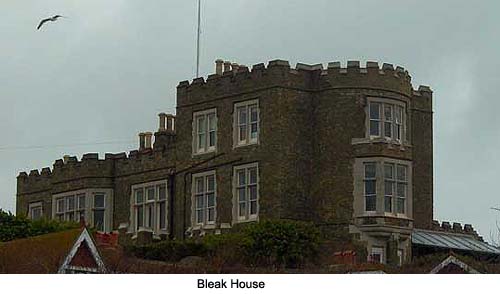
Even the gentile resort of Broadstairs did not escape
the smuggler's attention. Bleak House overlooks the
harbour, and Charles Dickens could look down at smugglers working
on the beach. Until recently the building housed a small
smuggling museum in the basement, but it is now a private house.
Many of the old houses that line Harbour Street have
cellars and other hiding places used by the smugglers.
Pegwell Bay is where the Saxon mercenary Hengest landed in
the 5th century at the invitation of King Vortigern. Today the
event that led to Saxon rule of eastern England is commemorated
by a replica longship standing beside the main road. In the 18th
century Pegwell village was a fishing community, before
the sea and the construction of the Hover-port destroyed much of
the original coastline. However a tunnel (now blocked) led down
from the Belle View Tavern to the shore. The Coastguard
cottages were built in 1831 to control the situation after
hundreds of landings were taken up through 'arch tunnel' from the
beach for storage in the village store and smugglers'
cottages. The entrance to various tunnels can still be seen
cut into the chalk cliff.
In 1746 almost 12 tons of tea was being landed by a joint force
of the Hawkhurst Gang and men from Wingham at Sandwich
Bay. Something went wrong and the Wingham men left with their
share of the cargo before the landing was complete. Incensed at
their loss, the Hawkhurst men collected their swords and the
ensuing battle left seven of the Wingham men wounded. The
Hawkhurst men gained forty horses and most of the tea. In 1817,
Blockade-men discovered a wood-lined pit on the beach, concealed
by a thick layer of shingle to defeat the use of probes. Also
worth a visit is the small town of Sandwich, including its
Customs House alongside Quay Lane.
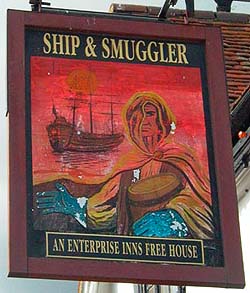 Deal
was ideally located at the southernmost point of Sandwich Bay.
Offshore, the treacherous Goodwin Sands protected smuggling
vessels from unwanted attention, with boats launched from the
beach to deliver messages and supplies to the waiting vessels. As
well as smuggling, the men of Deal gained such a reputation as
'hovellers,' or looters, that the East India Company escorted its
vessels through the Straights of Dover to minimise losses. Deal
was ideally located at the southernmost point of Sandwich Bay.
Offshore, the treacherous Goodwin Sands protected smuggling
vessels from unwanted attention, with boats launched from the
beach to deliver messages and supplies to the waiting vessels. As
well as smuggling, the men of Deal gained such a reputation as
'hovellers,' or looters, that the East India Company escorted its
vessels through the Straights of Dover to minimise losses.
Deal became a centre of smuggling again during the Napoleonic
Wars. In 1781 a force of cavalry and infantry was sent to search
the town for contraband. The townsmen were tipped off, and
managed to send most of what they had hidden back to France for
safekeeping. In January 1785, in an effort to curtain the town's
lawless activities, William Pitt ordered the destruction of every
boat drawn up on the beach for the winter. The locals believed
they were watching a military exercise until it was too late.
Today the galley-punt Undaunted is preserved by the pier
in remembrance of the event. When exploring the town, remember
that the seamen and smugglers lived mainly in the narrow
alleyways around Middle Street. Further information on the
towns past can be found in the Museum of Maritime and Local
History. South of Deal lies Eastwear Bay at
Folkestone (then a small fishing village) was another
popular landing site. One of the largest seizures ever made
occurred near Folkestone in 1773, when lace and silks worth over
£15,000 were captured.
Maidstone is now the county town of Kent -- a large district
centre with many former villages forming its suburbs. One of
these is Grafty Green where The King's Head was
frequented by an infamous fellow known as Dover Bill. Local
tradition tells that Bill and his fellow smugglers were surprised
by the Revenue while drinking in the pub, and events escalated to
a full-scale running battle. Eventually all of the gang except
Bill were captured, leaving Bill as an outcast amongst his
friends and neighbours. The captured members of the gang were
hung at Penenden Heath, which witnessed the capital
punishment of many smugglers, including two of the Ransley
brothers (see below).
At West Peckham the ruins of Diamonds Cottage are
all that remain of the home of Jack Diamond; member of the
infamous Hawkhurst Gang and sometime highwayman. Diamond was one
of the gang who attacked Poole Customs House in 1746. His ghost
is said to appear occasionally on Friday the 13th, the day the
cottage was destroyed by fire.
Today the village of Wrotham stands near a major motorway
junction, but it has always been an important communications
centre between the Weald, London and the North Downs. The Vigo
Inn at the top of Wrotham hill, above the village and the
motorway, housed a specially hidden bolt-hole where smugglers and
their goods could be hidden. In the village itself, a stone in
the wall next to The Bull Hotel commemorates the murder
and retribution of Lieutenant Colonel Shadwell. Shadwell, the
leader of a local smuggling gang, frequented the hotel until he
was shot by an army deserter in 1799. Shadwell's associates
quickly captured his murderer, and a companion, and beat them to
death.
Another well known smuggler from Wrotham was Old Sobers. His
prosperous family could readily muster horses and specialised in
transporting cargo landed near Sandwich. They developed a
system of communication typical of ingenuity of many gangs. The
guards on the regular coach services between Dover and London
would play different tunes on their trumpets as they passed
through the village. These were then decoded by the gang. During
the day cows were tethered in groups of three (at night more
conventional lamps were used) as a signal for two hundred men
from the villages of Wrotham, Ightham and
Platt to collect their horses. Such a large force was able
to stay out of most trouble; helped, no doubt, by the Excisemen
of Sandwich, who were bribed to catch eels while cargo was landed
nearby. Hiding places used by the Sobers family included
Mereworth Woods and the sandpits and quarries near Borough
Green, as well as the Iron Age earthworks at Oldbury Camp
near Ightham.
The South Kent Smuggling Trail
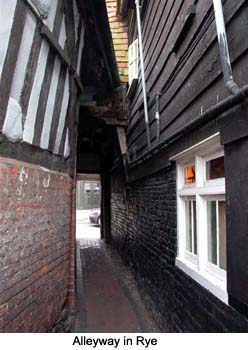 Starting in the ancient port and infamous smuggling
capital of Rye, this trail crosses Romney Marsh and follows the
shingle coast, before turning back to the picturesque villages
and market towns of the Kentish weald. Starting in the ancient port and infamous smuggling
capital of Rye, this trail crosses Romney Marsh and follows the
shingle coast, before turning back to the picturesque villages
and market towns of the Kentish weald.
Although in Sussex, no history of Kent smuggling can ignore the
ancient Cinque Port of Rye. Its location, narrow cobbled
streets and closely built houses interconnected by attics and
cellars, made it an ideal landing place for smuggled cargoes. At
the height of their fame, the Hawkhurst Gang is said to have
openly sat in the bar of the Mermaid Inn with their loaded
pistols laid casually on the tables. Watchbell Street is
mentioned in one of Russell Thorndike's Dr Syn stories, and much
of the town retains remnants of its smuggling past, as well as
other fascinating and picturesque buildings. On one occasion
twenty men of the Hawkhurst Gang frightened the locals at The
Red Lion by firing their pistols in the air. A young man
named James Marshall, who took too much of an interest in the
gang's activities, was abducted by the smugglers and never seen
again.
The Flushing Inn in Market Street was another smuggler's
haunt, and parts of the building date to before 1377, when much
of Rye was destroyed by a French attack. The Bakery in
Market Street contains a lift mechanism that allowed casks to be
raised into the attic for hiding. Above the warehouses along the
quayside of the old town, Traders Passage linked the
lookout in Watchbell Street with the notorious London
Trader Inn in Mermaid Street. Today it is hard to visualise
how like an island Rye was in the 18th century, but the
ferryman's house and boatyards add to the sense of
history that pervades the town. An essential visitor attraction
is the meticulous Rye Town Model in the Tourist Information
Centre. Another small museum occupies Ypres Tower, a
former prison that frequently housed captured smugglers.
The boat builders of Rye became experts at building smuggling
vessels incorporating hidden compartments. One of the most famous
was the Sally of Hastings. She was constructed as a 'boat
within a boat' with a five-inch gap between her hulls for
concealing contraband. A few miles to the west, at Rye
Harbour, the black Coast Blockade Watch House
(featuring a lookout window) and the later Victorian
Coastguard cottages can be seen. The beaches at Rye Harbour
and Camber were frequently used by landing crews. The
Revenue vessel based at Rye was even attacked while lying in the
harbour. Now a private house, the Camber Watch House can
be seen at the eastern end of the village.
Travelling back eastwards across Romney Marsh, Lydd was
notorious as a centre for smuggling. In the 1700s it still
retained some direct contact with the sea. Today's Pilot
Inn is something of a disappointment to the visitor seeking
history, but it does occupy the site of the original public
house. Pilots were picked up by vessels entering the Straits of
Dover, and the boats that rowed them out into The Channel
frequently returned with useful items from the ship's cargo. In
1688 a clothier called William Carter was attacked as he and his
men rode through Lydd, just hours after a group of Owlers he'd
arrested earlier had been bailed. Carter left Lydd the next
morning for Rye, but was attacked by fifty armed men as he
passed Camber. In the 1730s Lydd was home to a company of
Dragoons who sold their seizures to a local Exciseman at the rate
of two shillings for a half anker (approx. four gallons) of
brandy.
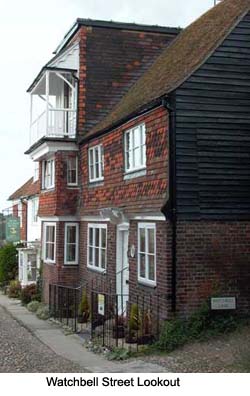 Brookland was the scene of a battle between the
Revenue forces and the Aldington Gang in 1821. This left five men
dead and twenty-five wounded. During the running battle across
Walland Marsh, which involved up to 250 men, Cephas
Quested, the founder of the Aldington Gang, was captured and
subsequently hung, leaving George Ransley to take over. Those
wounded in the battle were treated at Pear Tree House by
Dr Ralph Hougham, who was well used to treating both sides in the
conflict. He reported that he was often led blindfolded across
the marsh to the aid of a wounded smuggler. Brookland was the scene of a battle between the
Revenue forces and the Aldington Gang in 1821. This left five men
dead and twenty-five wounded. During the running battle across
Walland Marsh, which involved up to 250 men, Cephas
Quested, the founder of the Aldington Gang, was captured and
subsequently hung, leaving George Ransley to take over. Those
wounded in the battle were treated at Pear Tree House by
Dr Ralph Hougham, who was well used to treating both sides in the
conflict. He reported that he was often led blindfolded across
the marsh to the aid of a wounded smuggler.
The Rev. Richard Harris Barham, rector of Snargate, is
best known as Thomas Ingoldsby, Esq., eponymous author of the
Ingoldsby Legends. Snargate Church was frequently
used for storing contraband (Braham claimed he could find it on a
dark night from the smell of tobacco), as was St George's
Church at nearby Ivychurch. Next door to the church,
The Bell was often frequented by free traders.
Unlike Rye, the town of Dymchurch has lost much of its
former character. However, it provides the settings for the
adventures of the fictional Dr Syn. The Ship Hotel, which
is the centrepiece for many of the fictional clergyman's
adventures, was a smuggler's haunt in real life and also played
host to the local coroner's court, where inquests were held into
the deaths of many smugglers. The pub has been extensively
remodelled (and today's road passes at the rear of the building)
but upstairs little has changed. Rumours of a tunnel leading from
the pub to the Church of St Peter and St Paul across the
road are unsubstantiated. Inside the church, a brass plaque
commemorates the writer and actor Arthur Russell Thorndike
(1885-1972), whose literary creations (including the terrifying
Scarecrow of Romney Marsh and his companion Hellspite) proved so
popular that he was forced to resurrect him after killing him off
at the end of the first novel. Thorndike donated the image of Dr
Syn to the church for fundraising purposes, and Dymchurch holds a
bi-annual 'Day of Syn' festival on August Bank Holiday.
Many gravestones in the churchyard provided inspiration for
Thorndike, and the names on many tombs will be familiar to fans
of the Dr Syn books. The village war memorial is located on the
spot formerly occupied by a set of gallows, and New Hall
alongside the church houses a small cell where captured smugglers
were held before they were tried in the house by the local
bailiffs. In 1787 smugglers were captured here attempting to send
live sheep to France. They were imprisoned in Dover, but soon
escaped.
Dymchurch Wall, along the edge of the beach, afforded
cover for smugglers engaged in landing activities, and the
London City Inn confirms the final destination of the
goods. Although built for the Napoleonic Wars, Martello Tower
24, which is open to the public, was used as a Coast Blockade
Station during the 1820s. Further along the coast towards Hythe,
Herring Hang was another popular landing site. The network
of drainage ditches across the marsh frequently enabled
smugglers, often with local help, to evade pursuers, particularly
during the thick fogs that envelope the area. Near Dymchurch
stands the ruined church of Hope All Saints. These ruins
were used for clandestine meetings until a Preventative Officer
hiding on top of the ruined walls overheard one such plan and
seized a cargo as a result.
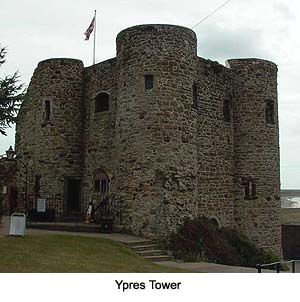 Today Hythe, another of the Cinque Ports, is a
pretty seaside town. The coaching inn, The Red Lion, crops
up in some of Dr Syn's adventures, while a mill stream ran
underneath another pub, The Bell. Casks of smuggled rum
and brandy were floated in here through a tunnel in the cellar
and hidden by being hung from a peg in the ceiling. The Royal
Military Canal runs through the middle of Hythe and was built
as part of Britain's defences against Napoleon, but the
separation of Romney Marsh from the rest of Kent by the canal
made the landing of cargo harder in subsequent years. The
Smuggler's Retreat in the High Street suggests that activity
was not completely curtailed. Today Hythe, another of the Cinque Ports, is a
pretty seaside town. The coaching inn, The Red Lion, crops
up in some of Dr Syn's adventures, while a mill stream ran
underneath another pub, The Bell. Casks of smuggled rum
and brandy were floated in here through a tunnel in the cellar
and hidden by being hung from a peg in the ceiling. The Royal
Military Canal runs through the middle of Hythe and was built
as part of Britain's defences against Napoleon, but the
separation of Romney Marsh from the rest of Kent by the canal
made the landing of cargo harder in subsequent years. The
Smuggler's Retreat in the High Street suggests that activity
was not completely curtailed.
Aldington was the main headquarters of the Ransley's gang,
sometimes known as 'the Blues,' Today this is celebrated by the
smuggler depicted on the sign of The Walnut Tree. Inside
the pub is a tiny spyhole offering views over Romney Marsh, while
the churchyard holds the graves of two of the Ransley brothers,
who were executed at Penenden Heath near Maidstone. For a
time George Ransley was employed as a carter at Court Lodge
Farm. He also built himself a house in the village, The
Bourne Tap. As the name suggests, this was used as an
unlicenced beer-house or pub, but has since been extended into a
comfortable private home. From Aldington Knoll the gang
could look out over the wide expanse of Romney Marsh. Following a
fight amongst the beach huts at Dover in July 1826, the
gang were surprised in their beds in the village by Bow Street
Runners and Blockade Officers at 3 o'clock in the morning.
Woodchurch was home to several members of the Ransley's
gang in the early 1820s. In 1826 they fought with the Revenue
here on the Village Green, while The Six Bells has,
unsurprisingly, hidden cellars. The unusual name of the other pub
in the village, the Bonny Cravat, is said to come from a
smuggling vessel called the Bonne Cravate. This pub was
often used as a courtroom, and several smugglers were sentenced
to death here before being hung on a gallows outside.
In Hawkhurst, the Oak and Ivy inn was used as the
headquarters of the most infamous and violent of all the
smuggling groups, the Hawkhurst Gang, under the leadership of
Arthur Gray. Here goods en route to London and Oxfordshire could
be safely stored for a time. Gray established the gang with his
brother William and built a house, complete with his own bonded
storeroom, at Seacox Heath just to the west of the
village. It was said that the village of Hawkhurst could raise
five hundred men at short notice to undertake smuggling activity.
One of the most famous episodes in the history of the gang
occurred in 1746, when they raided the Custom House at Poole in
Dorset (120 miles from Kent) to recover a seized load of tea with
some west-country colleagues. The gang's profit on the venture
was considerably reduced. Not only did a number of gang members
die in the attack, but the government lowered the import duty on
tea at the same time, reducing its value.
Sissinghurst is most famous for the gardens designed by
Vita Sackville-West. Less well know is the village pub, The
Bull, where a seemingly innocent cupboard in one of the rooms
to the rear of the building conceals an escape hatch.
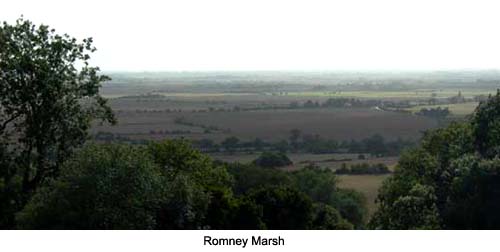
Another Wealden village is Goudhurst, another centre of
operations for the Hawkhurst Gang. The Church was used as
a hiding place for goods, and legend tells of a tunnel leading
from the here to the Star and Eagle Inn. Goudhurst church
is also famous as the site where, on April 28th 1747, local
militiamen led by William Sturt erected barricades for their
final stand against the tyranny of the Hawkhurst Gang. One of the
leaders of the Gang, George Kingsmill, was shot during the
'battle' and is buried in the churchyard. He had
previously boasted that he would burn the village to the ground
as revenge for the villagers' resistance. His brother Thomas, who
also led the Gang for a time, used the house called
Spyways, a little further down the hill from the church,
as his headquarters. After he was executed at Tyburn his
body was brought to Goudhurst Gore. Meanwhile, another
member of the Hawkhurst Gang, William Fairall, was hung in chains
at the end of Gibbet Lane in Horsmonden where he
lived.
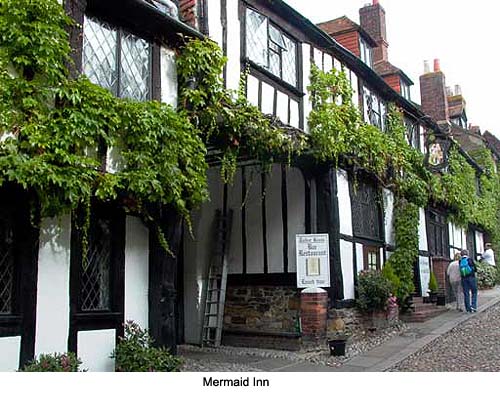
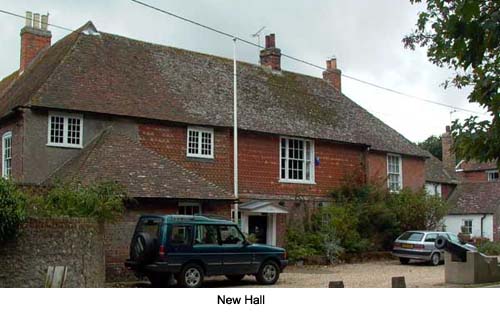
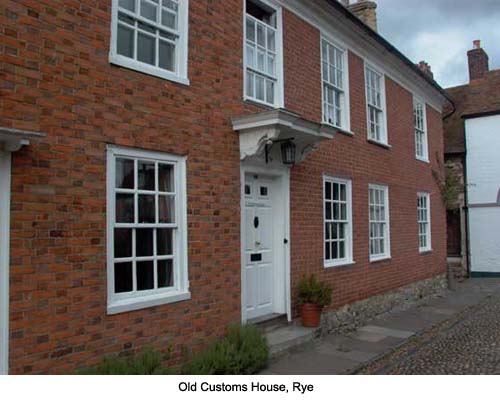

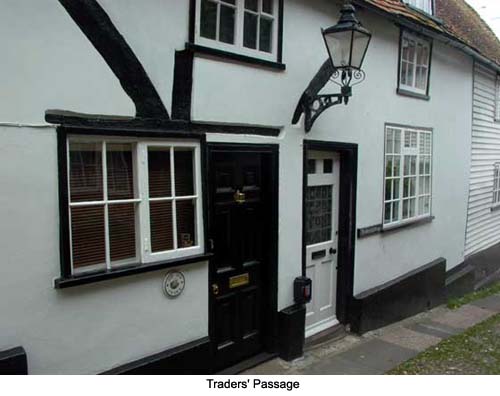
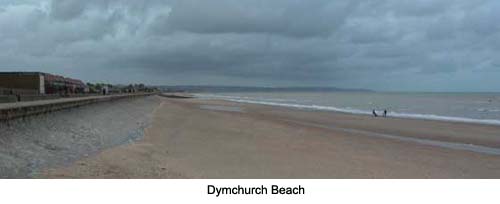
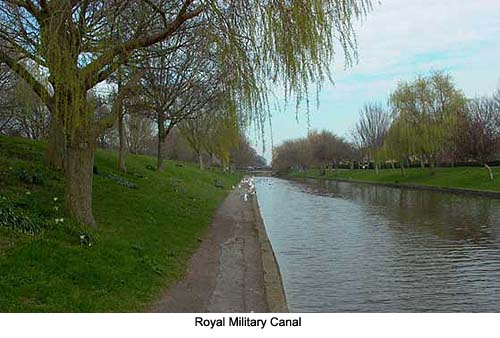
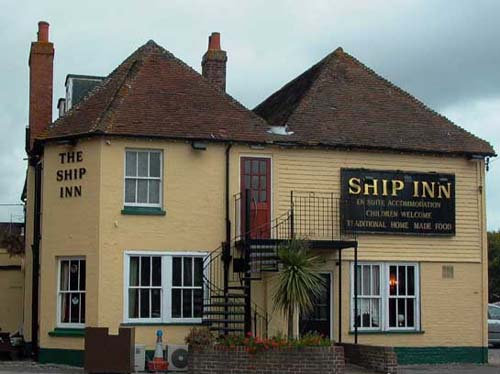
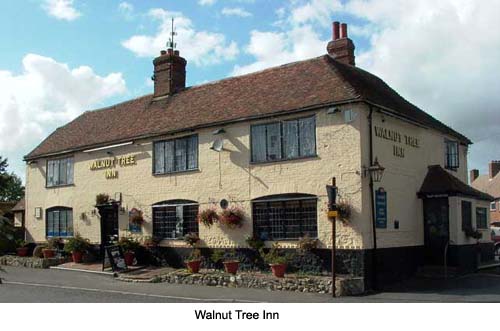
Maps
The maps listed below are available directly from the OS website (http://www.ordnancesurvey.co.uk) and cover the main areas described
in this article. For exploring by car or on foot the 1:50,000 Landranger series is
perfectly adequate. However, if you can afford it and you want more detail, including
other tourist attractions, then consider the larger scale Explorer series.
Ordnance Survey 1:50,000 Landranger (pink) series (£6.49 each)
178 -- Thames Estuary, Rochester & Southend-on-Sea
179 -- Canterbury & East Kent, Dover & Margate
188 -- Maidstone & Royal Tunbridge Wells
189 -- Ashford & Romney Marsh, Rye & Folkestone
Ordnance Survey 1:25,000 Explorer (yellow) series (£7.49 each)
125 -- Romney Marsh, Rye & Winchelsea
136 -- The Weald & Tunbridge Wells
137 -- Ashford, Headcorn, Chilham & Wye
138 -- Dover, Folkestone & Hythe
147 -- Sevenoaks & Tonbridge
148 -- Maidstone & the Medway Towns
149 -- Sittingbourne & Faversham, Isle of Sheppy
150 -- Canterbury & the Isle of Thanet
163 -- Gravesend & Rochester
Books
The following books are available from Amazon.com:
Doel, Fran & Geoff; Folklore of Kent, 2004, Tempus Publishing Ltd
Lely, Bridget; Smuggling in Kent
Platt, Richard; The Ordnance Survey Guide to Smuggler's Britain
Phillipson, David; Smuggling: A History 1700-1970, 1973, David &
Charles
Quinn, Tom; Smuggler's Tales, 2001, David & Charles
Thondyke, Russell; Dr Syn: A smuggler tale of the Romney Marsh
Waugh, Mary; Smuggling in Kent and Sussex, 1700-1840
Related Articles:
- On the Trail of Cornwall's "Free Traders," by Grant Eustace
- https://www.timetravel-britain.com/articles/country/smugglers.shtml
More Information:
We regret that we no longer have the resources to maintain up-to-date links and/or hours and pricing details for the various sites and attractions listed on this website. For more information about the location(s) listed above, please use your favorite search engine or visit Wikipedia.
Richard Crowhurst is a freelance writer and author based in Lincolshire,
England. He writes on many subjects, including history and heritage topics.
More details can be found on his website, http://www.freelance-writer-and-author.co.uk.
Article and photos © 2006 Richard Crowhurst
|
